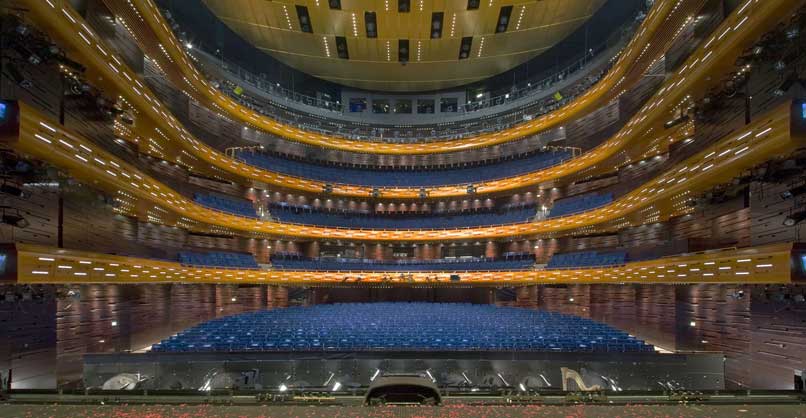Going back as far as 1448, to the time when King Christian I founded a trumpet corps, or to the grand celebration for the prince's wedding in 1634, it is clear that many events in the history of Danish musical institutions have had royal connections. In 1689 Christian V had the first opera house built; it burnt down not long after, taking with it some two hundred victims. This tragic accident may explain the lack of interest shown in the new Royal Opera House built in 1703. Of course, it may also be that the audiences did not enjoy the taste for German opera favoured by King Frederik IV whose fascination with the art was such that he had a theatre built within the grounds of the royal castle.
Visiting German and even Italian troupes entertained the monarchs with their operas, but it was a Frenchman who, in 1722, was entrusted with a royal monopoly to set up Danish theatre company which gave occasional performances of works featuring musical interludes — «Mascherata». Religious bans outlawed drama and opera, but in 1748 a new theatre was opened on Kongens Nytorv and works by Italian composers and Gluck provided entertainment for the residents of Copenhagen and competition for the Royal Court. Influenced by the new French comic opera and with a school for singers that had opened at the Kongens Nytorv theatre, an authentic style of national opera emerged, starting first as a form of Danish "singspiel", then, under the influence of the romantic movement, developing into true opera that was the work of a recognised and prolific school. In 1874 the Kongens Nytorv theatre was demolished and the same year replaced by the present building where dramatic art has always held pride of place.
In the early 20th century, operas by the Danish composer, Carl Nielsen, were premiered, at the same time as Wagner's operas were performed. The institution gained further support with Frederik IX's enthusiasm for opera. Before coming to the throne, the then prince had studied orchestral conducting with the artistic director of the opera house. A more recent example of the grand vitality of the Royal Theatre was in 1943, in the middle of the war, with the country under Nazi occupation, when the theatre presented the European premiere of Gershwin's PORGY AND BESS. In the five decades since, international productions have been directed by such names as Wieland Wagner, Gbtz Friedrich and Harry Kupfer, and dynamic efforts have promoted young Danish singers and composers . Programming at the Royal Theatre in this "little country" has remained faithful to history, being open to exchanges with other countries, while also providing faithful support for works by Danish composers.








